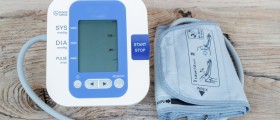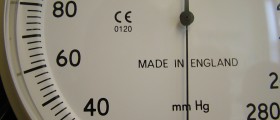Nose bleeds may occur due to many factors. They also affect people of all ages. In adults with no previous anamnestic data in the sense of nose bleeds, frequent bleeding for the nose may be only one sign of increased blood pressure.
Causes of Nose Bleeds
It is symptomatic for people suffering from undiagnosed increased blood pressure to experience occasional nose bleeds. The bleeding occurs once the pressure exceeds the normal range. Apart from high blood pressure, nose bleeds are also associated with dry weather conditions, and problems with coagulation in children nose bleeds can develop as a consequence of frequent nose picking.
Nose Bleeds and High Blood Pressure
Nose bleeding can be classified as anterior and posterior. One of the causes of posterior nose bleeds is elevated blood pressure. The blood vessels in the nose are very delicate. They are located near the surface of the mucous membrane and can easily rupture in case of a sudden increase in blood pressure.

Since high blood pressure usually affects older individuals, there is one more explanation for why unregulated high blood pressure leads to frequent nose bleeds. Older patients usually suffer from atherosclerosis. The affected blood vessels change their structure and lose their elasticity and flexibility.
Even without atherosclerosis, the blood vessels tend to lose elasticity in time. This makes them more susceptible to sudden changes in blood pressure, a common feature of high blood pressure.
- The hypertension cohort comprised 35?749 patients with a record of 3 or more prescriptions of antihypertensive medication and a diagnosis of hypertension (International Statistical Classification of Diseases and Related Health Problems, Tenth Revision code I10). Patients with other diseases associated with epistaxis, such as sinonasal tumors, facial trauma, bleeding tendency, and coagulation disorder, as well as those taking anticoagulant medications, were excluded.
- A comparison cohort comprised 35?749 individuals without hypertension matched sociodemographically in a 1:1 ratio. Statistical analysis was performed from January 1, 2019, to March 31, 2020.
- The incidence and recurrence of epistaxis were evaluated in both cohorts. The risk factors for epistaxis and management strategies were also assessed.
- Among the 35?749 patients in the hypertension cohort (20?579 men [57.6%]; median age, 52 years [interquartile range, 45-62 years]) the incidence rate (IR) of epistaxis was 32.97 per 10?000 persons (95% CI, 30.57-35.51 per 10?000 persons); among the 35?749 individuals in the comparison cohort (20?910 men [58.5%]; median age, 52 years [interquartile range, 45-62 years]), the IR of epistaxis was 22.76 per 10?000 persons (95% CI, 20.78-24.89 per 10?000 persons) (IR ratio, 1.45; 95% CI, 1.29-1.63; adjusted hazard ratio, 1.47; 95% CI, 1.30-1.66).
- The IR of recurrent epistaxis was 1.96 per 10?000 persons in the hypertension cohort and 1.59 per 10?000 persons in the nonhypertension cohort (IR ratio, 1.23; 95% CI, 0.77-2.00). Patients with hypertension who experienced epistaxis were more likely to use the emergency department (odds ratio, 2.69; 95% CI, 1.70-4.25; Cohen h effect size, 0.27; 95% CI, 0.16-0.39) and receive posterior nasal packing (odds ratio, 4.58; 95% CI, 1.03-20.38; Cohen h effect size, 0.15; 95% CI, 0.03-0.26) compared with the comparison cohort.
Treatment for Recurrent Nose Bleeds
It is essential to identify the cause of recurrent nose bleeds. Once the problem is clear the doctor may opt for the most suitable treatment. In the case of unregulated blood pressure, nose bleeds may repeat until the person is diagnosed with hypertension. If elevated blood pressure is brought under control, recurrent nose bleeds can be successfully brought under control.
In case of nose bleeds occur, one should know how to stop the bleeding. The person is supposed to sit straight and lean a bit forward. This position reduces pressure on the blood vessels in the nose. The position also prevents the pouring of the blood into the throat. Additional help is obtained by pinching the nose with the index finger and the thumb. This maneuver can stop nose bleeding which occurs due to damage to the nasal septum.
All patients suffering from high blood pressure are due to take their medications and go for regular check-ups. If there are side effects of the treatment and the blood pressure is not suitably controlled with prescribed medications, the patients are due to consult their doctors who will modify the therapy.

















Your thoughts on this
Loading...